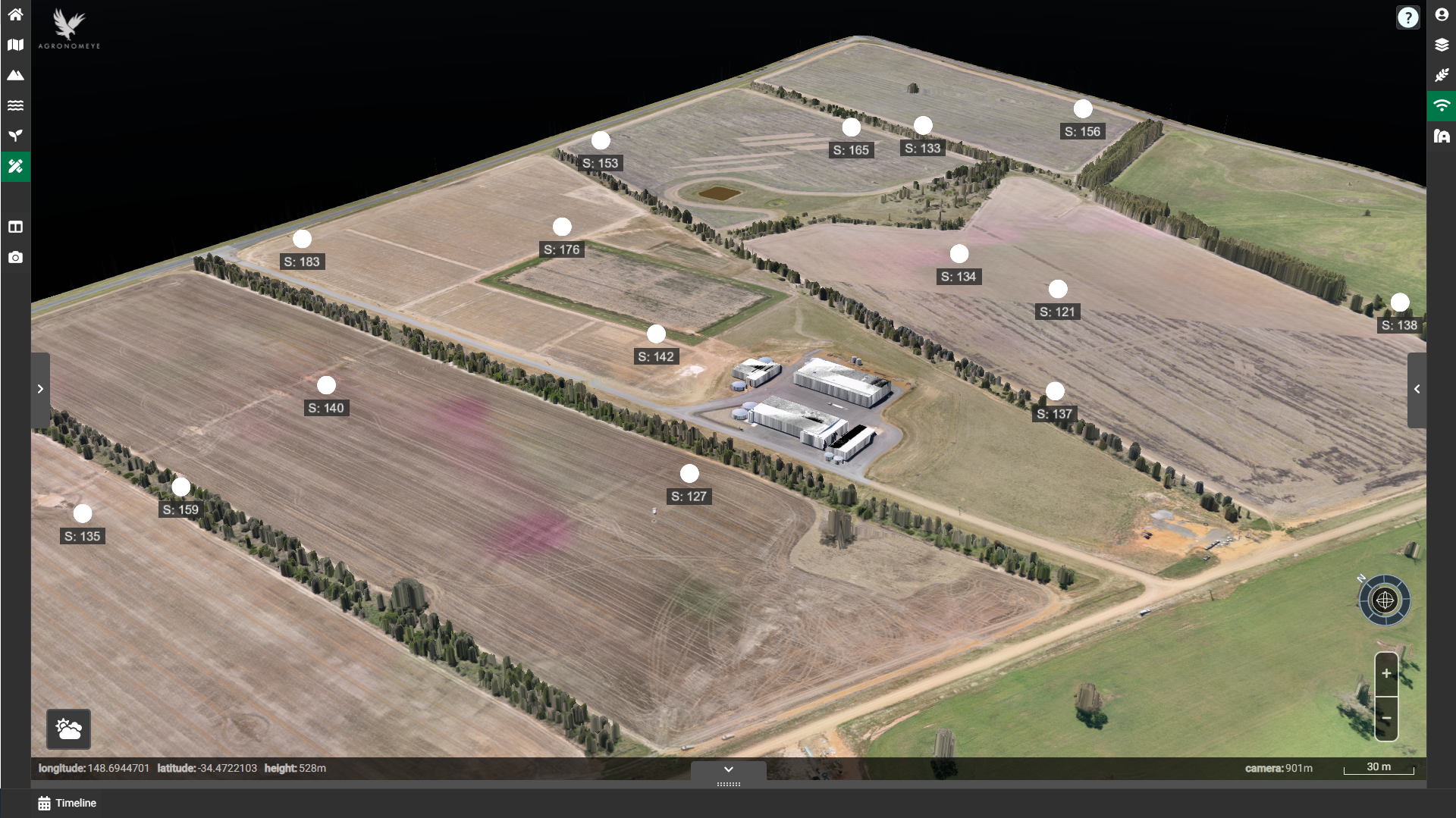
Optimised decision making can lead to improved farm productivity and sustainability outcomes. Water availability is at the heart of crop and fodder management, and knowing soil moisture allows decision makers to:
- Choose the best crops and varieties to match.
- Plan sowing dates, as well as fertiliser timing and placement.
- Decide whether it is best to cut a crop for hay or take through to grain.
- Determine stocking rate and grazing rotations based on pasture growth.
Our work at BARS is helping us to better understand how the soil moisture changes over different periods of time (during a growing season, and over multiple years) and over different parts of the farm. This is helping us to deliver improved recommendations on how to make different tactical and strategic decisions.
Understanding soil moisture also helps farmers to forecast yield, forward-sell product, and assess the value of agricultural inputs.

Not all parts of a farm or landscape are the same, and therefore knowing soil moisture will enable growers to optimise different parts of their farm using different tactical and strategic management decisions.
Variations in soil properties drive its ability to both store and release water. Using sensors to measure soil moisture distribution ensures well-informed decisions that mitigate risks and exploit opportunities.
By knowing how your farm responds under different conditions (such as a wet or dry years) can allow farmers to make longer-term decisions around soil moisture utilisation with greater certainty.
Monitoring soil moisture at BARS

BARS is highly digitised, with soil moisture probes that measure at eight depths down to 170cm. We have equipped BARS with these sensors to enable us to understand how soil moisture changes across the farm and across time.
Variations in soil properties drive its ability to both store and release water. Part of the challenge is to accurately convert the sensor readings into the amount of plant available water – moisture that plants can actually use – and make it available in a timely manner to inform decision making.
In the Agronomeye AgTwin Showcase, plant available water content can be explored spatially across the whole farm at BARS to understand how different parts of the farm can be managed at any given time.
Monitoring changes to soil moisture that occur at different depths can help to ensure crops can access available water depending on their root zones.
Optimised decision making can lead to improved farm productivity and sustainability outcomes. Water availability is at the heart of crop and fodder management, and knowing soil moisture allows decision makers to:
- Choose the best crops and varieties to match.
- Plan sowing dates, as well as fertiliser timing and placement.
- Decide whether it is best to cut a crop for hay or take through to grain.
- Determine stocking rate and grazing rotations based on pasture growth.
Our work at BARS is helping us to better understand how the soil moisture changes over different periods of time (during a growing season, and over multiple years) and over different parts of the farm. This is helping us to deliver improved recommendations on how to make different tactical and strategic decisions.
Understanding soil moisture also helps farmers to forecast yield, forward-sell product, and assess the value of agricultural inputs.
Not all parts of a farm or landscape are the same, and therefore knowing soil moisture will enable growers to optimise different parts of their farm using different tactical and strategic management decisions.
Variations in soil properties drive its ability to both store and release water. Using sensors to measure soil moisture distribution ensures well-informed decisions that mitigate risks and exploit opportunities.
By knowing how your farm responds under different conditions (such as a wet or dry years) can allow farmers to make longer-term decisions around soil moisture utilisation with greater certainty.
Monitoring soil moisture at BARS

BARS is highly digitised, with soil moisture probes that measure at eight depths down to 170cm. We have equipped BARS with these sensors to enable us to understand how soil moisture changes across the farm and across time.
Variations in soil properties drive its ability to both store and release water. Part of the challenge is to accurately convert the sensor readings into the amount of plant available water – moisture that plants can actually use – and make it available in a timely manner to inform decision making.
In the Agronomeye AgTwin Showcase, plant available water content can be explored spatially across the whole farm at BARS to understand how different parts of the farm can be managed at any given time.
Monitoring changes to soil moisture that occur at different depths can help to ensure crops can access available water depending on their root zones.
